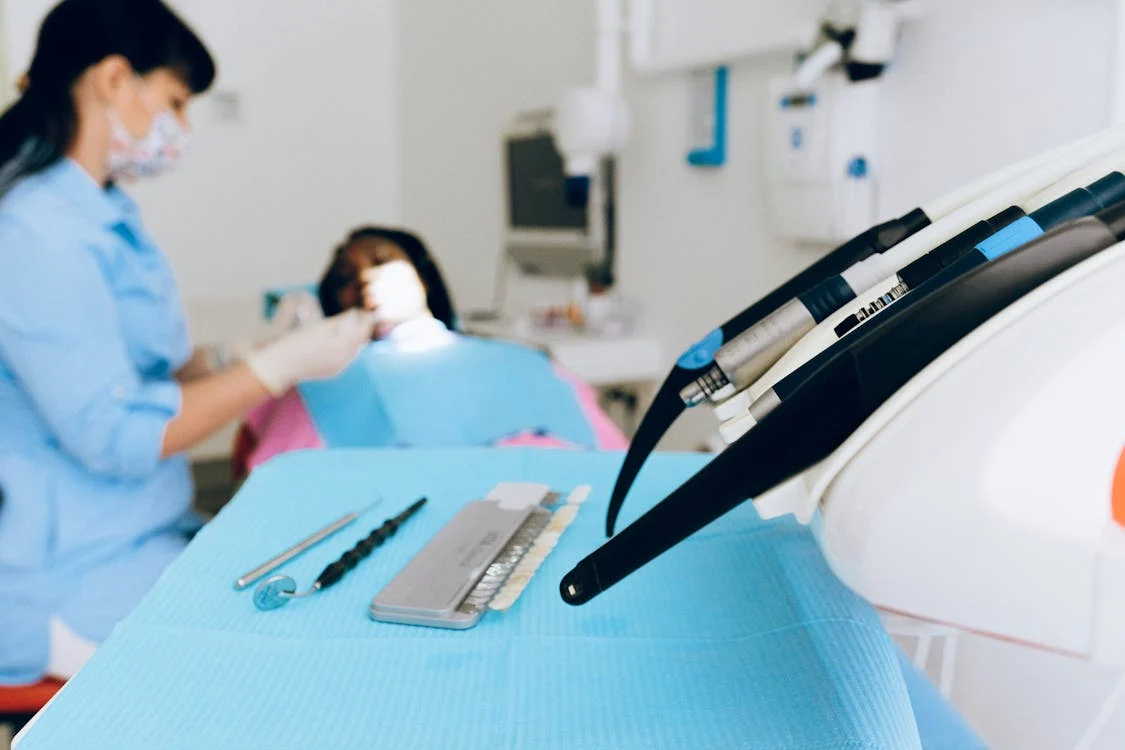Eyelid Surgery: A Complete Guide to Insurance and Procedures
Blepharoplasty, commonly known as eyelid surgery, is a procedure designed to enhance the appearance of the eyelids by removing excess tissue, such as skin, muscle, and fat. While many individuals opt for this surgery for cosmetic reasons, it may also be necessary for medical purposes, particularly when excess tissue obstructs vision. This guide will cover the different types of eyelid surgeries, insurance considerations, and what you can expect during the process.

Types of Eyelid Surgery
Eyelid surgery generally falls into two categories:
Upper Eyelid Surgery (Upper Blepharoplasty): This addresses issues related to the upper eyelids, such as sagging or excess skin, which can interfere with vision or create a fatigued look.
Lower Eyelid Surgery (Lower Blepharoplasty): This focuses on the lower eyelids, aiming to remove excess skin and fat, often tightening the muscle to reduce under-eye bags and sagging.
In some cases, patients may opt to undergo both procedures at the same time for a complete refresh of the eye area.
Insurance Coverage for Eyelid Surgery
Insurance coverage for this surgery depends on factors such as the purpose of the procedure (medical necessity vs. cosmetic) and the specific policy of your insurance provider.
Functional Eyelid Surgery:
When the excess skin or fat is obstructing vision or causing functional issues, insurance is more likely to cover some or all of the procedure. In such cases, it is considered medically necessary.
Cosmetic Eyelid Surgery:
For those seeking eyelid surgery purely for aesthetic reasons—such as reducing signs of aging or enhancing the appearance—insurance generally does not cover the cost. However, certain plans might offer coverage under specific conditions.
It's essential to verify with your insurance company and review your plan's details prior to scheduling the surgery. Many insurers require a medical evaluation by an eye doctor to determine whether the surgery is necessary for vision improvement.
What to Expect During Eyelid Surgery
Typically performed as an outpatient procedure, eyelid surgery involves local anesthesia with sedation or general anesthesia. Here’s a general outline of what the procedure entails:
- Consultation and Preparation: Your surgeon will assess your eyelids, discuss your goals, and provide guidance on how to prepare for the surgery. This may include advice on medications or supplements to avoid.
- Anesthesia: Based on the complexity of the surgery and your preferences, you will either receive local anesthesia with sedation or general anesthesia.
- Incisions: Incisions are made along the natural folds of the eyelids, through which excess skin, muscle, and fat are removed.
- Closing the Incisions: Once the necessary adjustments are complete, the incisions are closed using stitches or surgical tape.
- Recovery: After the procedure, you can expect some swelling, bruising, and discomfort, which typically subside within one to two weeks. Your surgeon will provide aftercare instructions to promote healing.
Though the results of eyelid surgery are long-lasting, it’s important to note that the natural aging process may continue to alter the appearance of the eyelids over time.
| Procedure | Upper Blepharoplasty | Lower Blepharoplasty |
| Target Area | Upper eyelids | Lower eyelids |
| Common Concerns | Drooping or excess skin that can impair vision, tired appearance | Undereye bags, sagging, or excess fat |
| Incision Location | Along the natural crease of the upper eyelid | Just below the lash line or inside the lower eyelid |
| Recovery Time | 1-2 weeks for swelling and bruising to subside | 1-2 weeks for swelling and bruising to subside |
| Potential Risks | Dry eyes, infection, scarring, inability to fully close the eyes | Dry eyes, infection, scarring, lower eyelid malposition |
To ensure the best results for your procedure, it's essential to have a thorough conversation with a certified plastic surgeon who can address your concerns and guide you toward the most appropriate option.
Preparing for Eyelid Surgery
Proper preparation is key to a smooth eyelid surgery experience. Here are some important steps to take beforehand:
Select an Experienced Surgeon: Find a board-certified surgeon with a strong track record in eyelid surgeries. Review their credentials, patient feedback, and before-and-after photos to ensure their style meets your expectations.
Undergo a Medical Assessment: A comprehensive evaluation, including blood work and an eye exam, will likely be required to confirm you're a suitable candidate for the surgery.
Stop Smoking: If you smoke, it’s crucial to quit several weeks before and after the procedure, as smoking can impede recovery.
Modify Medication Intake: Your surgeon will provide instructions on adjusting medications, especially blood thinners, which can increase surgical risks.
Arrange Post-Surgery Help: You'll need assistance getting home and support for the first day or two as you recover.
Prepare Your Living Space: Stock up on items like cold packs and pain relievers, and consider arranging help for household tasks.
Follow Pre-Surgery Guidelines: Your surgeon will give specific instructions for the days leading up to the procedure, including dietary restrictions.
By adhering to these steps, you'll help ensure a smooth surgery and recovery process.
Recovery and Aftercare
The recovery phase after eyelid surgery plays a critical role in your results. Here’s what to expect:
Initial Care: Right after surgery, ointment and cold compresses will be applied to reduce swelling. Mild discomfort is common and can be managed with prescribed medication.
Bruising and Swelling: Expect noticeable swelling and bruising for 1-2 weeks or longer. This is normal and should gradually improve.
Activity Limitations: Avoid strenuous activities, bending over, or lifting heavy objects for a few weeks.
Eye Care: Follow your surgeon's instructions for using eye drops and keeping the area clean.
Protect Incisions: Your surgeon will guide you on cleaning incisions and using ointments.
Sun Protection: To avoid discoloration, wear sunglasses and cover up while outside.
Follow-Up Visits: Attend all scheduled follow-ups to monitor healing and remove any stitches.
Be Patient: Full results may take months to appear, so trust the process.
By adhering to these aftercare tips and attending follow-up appointments, you'll support a smooth recovery and optimal results.
Additional Procedures
Sometimes, eyelid surgery is complemented by other treatments to achieve a more youthful appearance. Consider these options:
- Brow Lift: Addresses drooping brows that can make you look tired or aged.
- Facelift: Provides more extensive facial rejuvenation when combined with eyelid surgery.
- Dermal Fillers: Helps restore volume around the eyes.
- Laser Treatments: Improves skin texture and reduces fine lines.
- Skincare Regimen: A consistent skincare routine can help maintain the results of surgery.
Talk to your surgeon to see if any of these options are suitable for your needs.
Choosing the Right Surgeon
Finding the right surgeon is crucial for successful results. Here’s what to consider:
- Board Certification: Choose a surgeon certified by recognized boards, such as the American Board of Plastic Surgery.
- Experience: Look for someone with significant eyelid surgery experience and a portfolio of past work.
- Hospital Privileges: Ensure your surgeon has privileges at accredited facilities.
- Clear Communication: A good surgeon listens to your goals and provides detailed explanations of the procedure.
- Reputation: Check patient reviews and references to gauge the surgeon's reputation.
- Safety Standards: Visit the operating facility to ensure it meets safety protocols.
Choosing an experienced surgeon with a solid reputation will increase your chances of a successful procedure.
Additional Resources:
For more information, you can explore the following resources:
Frequently Asked Questions (FAQs):
- How much does eyelid surgery cost? Costs typically range between $2,000 and $10,000, depending on the surgeon and the extent of the procedure.
- Is eyelid surgery painful? Most patients report minimal discomfort during the procedure, with manageable swelling and pain afterward.
- How long do results last? Results can last 5-10 years or more, though some opt for touch-ups as they age.
- Are there risks? Complications, while rare, can include infection, scarring, and issues with eyelid positioning.
- What’s the recovery time? You’ll likely need 1-2 weeks of rest, with swelling and bruising gradually subsiding.









